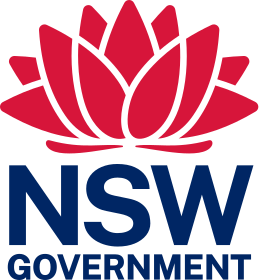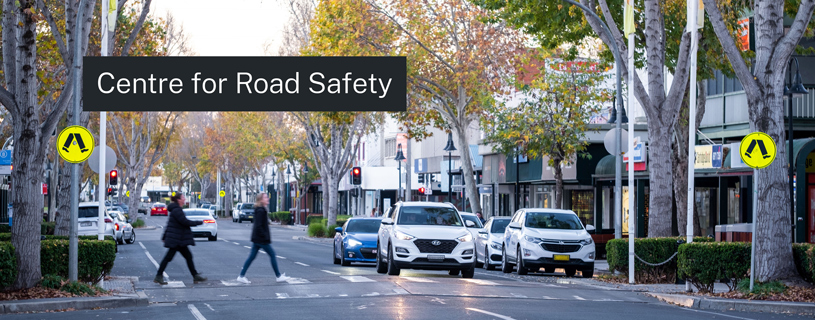Speed zones and speed management
Speed management
Effective speed management improves road safety, enhances liveability and reduces the environmental impact of road traffic. Safe speed limits help prevent crashes, protect vulnerable road users and minimise injuries when crashes occur.
Lower speeds also contribute to quieter, safer, and more walkable communities while reducing vehicle emissions.
Minimise harm
Speed limits are set to reduce the risk of crashes and minimise the force that road users are exposed to.
Safer speed limits lower the chances of fatal or serious injuries in a crash.
Our approach
We’re committed to creating safer roads by implementing consistent and effective speed management strategies. These initiatives include setting and reviewing speed zones, conducting community consultations, and educating drivers about the importance of complying with speed limits.
Speed zones support liveability
The Movement and Place Framework considers how different parts of the road network perform different functions based on:
- movement of people and goods
- places for people and their activities.
The design of a road should align with its surrounding environment. This can reduce the risk, incidence and severity of crashes. Choosing the appropriate speed limit for a zone improves the liveability and economic success of the community.
When setting speed limits, we consider:
- the physical characteristics of a place, the activities that take place there and how local communities value and identify with a place
- mobility through, within, and to and from a place
- variable speed limits where movement and place functions change at certain times or days of the week.
Environmental impact of road traffic
Appropriate speed zones help manage the environmental impacts of road traffic. Speed zones can encourage people to choose more sustainable modes of transport for shorter trips. This can reduce congestion and emissions.
Appropriate speed zones reduce the likelihood of crashes. Fewer crashes ease traffic delays and lower emissions.
Speed zones are set to be consistent
The NSW Speed Zoning Standard sets out principles and technical information for reviewing, determining, and implementing speed zones on NSW public roads.
The Standard helps to ensure that speed limits are set to promote the safe and efficient movement of people and goods, facilitate people-centred environments and connect places.
Many factors are considered when setting speed limits. These include crash history, crash risk, road characteristics (alignment, lane width and access points), road function, roadside development, traffic characteristics, at-risk locations and the presence of vulnerable road users.
How speed zones are set and reviewed
We engage the community in the speed zoning process to ensure their views are considered in speed zone management. Speed zone setting considers the:
- types of vehicles and road users using the road
- degree to which different road users face potential risks
- nature and standard of the road infrastructure and its surrounding environment.
Speed zones are reviewed regularly to ensure they align with evolving safety standards and community needs. Transport for NSW uses data-driven approaches and expert assessments to make evidence-based decisions about speed limits.
Successful placemaking in regional NSW
The High Pedestrian Activity Area (HPAA) project in Orange demonstrates how targeted speed management improves safety and traffic efficiency. Adjustments to speed limits and roadway designs in Orange delivered measurable benefits for both drivers and the community.
Image
Image controls:
Have your say about speed limits
We value your input. Share your comments on speed limits and speed limit signs in NSW using the Speed limits - have your say form. Your feedback, together with crash data and other road safety engineering information will be used to assess roads that require a speed zone review.
Stay informed by signing up for email updates on permanent speed limit changes across NSW.
You can also find the latest changes to permanent speed limits.
Speed zones and signs
Speed limits are set to allow you to safely respond to potential risks on the road. Lower speed limits apply in areas where there are more people and vehicles, reducing the chance of crashes and serious injuries.
10km/h shared zones
Roads with shared zones have high levels of pedestrian activity. The maximum speed limit is always 10km/h to allow vehicles to share the road with pedestrians.
There may not be road lines, kerbs or gutters in shared zones. As the driver, you must always give way to pedestrians.
30km/h zones
We aim to transform Sydney’s streets by promoting walking and cycling. Safer environments allow you to walk, cycle and commute with ease.
The NSW Government set up safer 30km/h speed zones in Manly to support the community and improve safety.
Multiple school zones within the 30km/h zones also have a 30km/h limit. 30km/h orange school zone signs and road markings alert you of the reduced speed.
40km/h zones
The 40km/h urban limit is part of a nationwide strategy to improve safety in high pedestrian activity areas. These areas include several CBD zones and small suburban shopping strips. The 40km/h limits are marked by signs showing local traffic zones and road work zones.
Signs and pavement markings showing the start of 40km/h pedestrian areas include:
- standard 40km/h speed signs
- high pedestrian activity area signs
- 40km/h pavement numerals (roads with painted speed limit numbers).
50km/h zones
50km/h speed limits apply to all built-up areas across NSW, unless other lower limits apply.
Built-up areas can have any of the following:
- Buildings on the land next to the road
- Streetlights along the road with a spacing of 100 metres or less for a total length of at least 500 metres
- Streetlights along the whole length of the road if it is shorter than 500 metres.
The 50km/h default limit applies to all urban roads without a speed sign. Reduced speed limits still apply at school zones, road works, and other special areas.
Advisory speed signs
Advisory speed signs aren't legal speed limits. These signs help you negotiate road features such as curves, bends, humps, and dips.
The signs show a recommended maximum speed in good driving conditions for the average car.
More information
Our driver’s aid app helps manage your speed by providing visual and audible warnings if you exceed the speed limit.
Enforcement cameras reduce road trauma. Find the current locations of all mobile, fixed and red-light speed cameras in NSW.
Drivers must obey the school zone speed limit of 40km/h during the times on the school zone signs. The lower speed limit improves safety.
Tell us where enforcement cameras should be put, suggest a change to speed zones in your area, or sign up for speed limit email updates.
Find the latest locations across NSW where speed limits have been changed. Revised speed limits do not take effect until the new speed limit signs are installed.
Visit the Movement and Place Framework website


